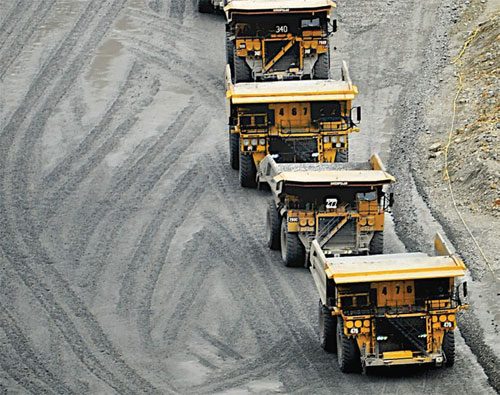Utah’s mineral mining industry is bucking a national trend, showing a 7 percent increase in the value of production in 2017, according to a new report released earlier this month by the Utah Geological Survey (UGS). The total value of the minerals taken out of Utah ground topped $3.3 billion last year, the report said.{mprestriction ids="1,3"}
The report, titled “Utah Mining 2017,” contains detailed information on the value and production of Utah’s mined commodities including metals, industrial minerals and coal. The report found that with the mining and processing of metals, precious metals, industrial minerals and coal, the mining industry employed 4,153 people in 2017, with an average salary just above $70,000 per year.
Although the production value of the mining industry is currently showing growth, it is down historically. The UGS report shows that production peaked in 2011 at about $5.3 billion.
The value of both base and precious metals production increased significantly in 2017, 11 percent and 15 percent, respectively. Base metal production contributed $1.4 billion to the total value and includes copper, magnesium, beryllium and molybdenum. Copper accounts for 70 percent of total base metal production value in the state.
Nationally, the U.S. Geological Survey (USGS) ranked Utah eighth among states in production of metals and industrial minerals in 2017. Utah has ranked among the top 10 for the past decade, the USGS said.
Precious metals produced in Utah include gold and silver and were valued at $261 million in 2017. Utah also produced industrial mineral commodities, including sand and gravel, crushed stone, salt, potash, cement, lime, phosphate, Gilsonite, clays, gypsum and others. The estimated value of industrial mineral production in 2017 reached $1.2 billion, a 5 percent increase over 2016. The most valuable industrial mineral group in 2017, estimated at $410 million, was the brine- and evaporate-derived commodities that included potash, salt and magnesium chloride.
In contrast to other minable commodities, the value of Utah coal production decreased in 2017 to $493 million, from $509 million in 2016. Utah remains the only state to produce magnesium metal, beryllium concentrate, potassium sulfate and Gilsonite. Of these mineral commodities, magnesium, beryllium and potash (includes potassium sulfate) are included on the U.S. Department of the Interior’s 2018 critical mineral list.
The U.S. Energy Information Administration ranked Utah as the 11th-largest coal producer out of 24 coal-producing states and accounted for 1.9 percent of total U.S. coal production.
The summary report has been substantially revised since its previous release and includes new figures showing historical production of a variety of mineral commodities and highlights various economic data, such as the mineral industry’s tax contributions.
“Utah Mining 2017” also provides information on historically produced commodities, such as uranium, and current mineral exploration and development within the state, including information about vanadium and lithium.
The 30-page report is available as a free download on the USG website or in printed form at the Utah Natural Resources Map & Bookstore, located at 1594 W. North Temple in Salt Lake City. {/mprestriction}








